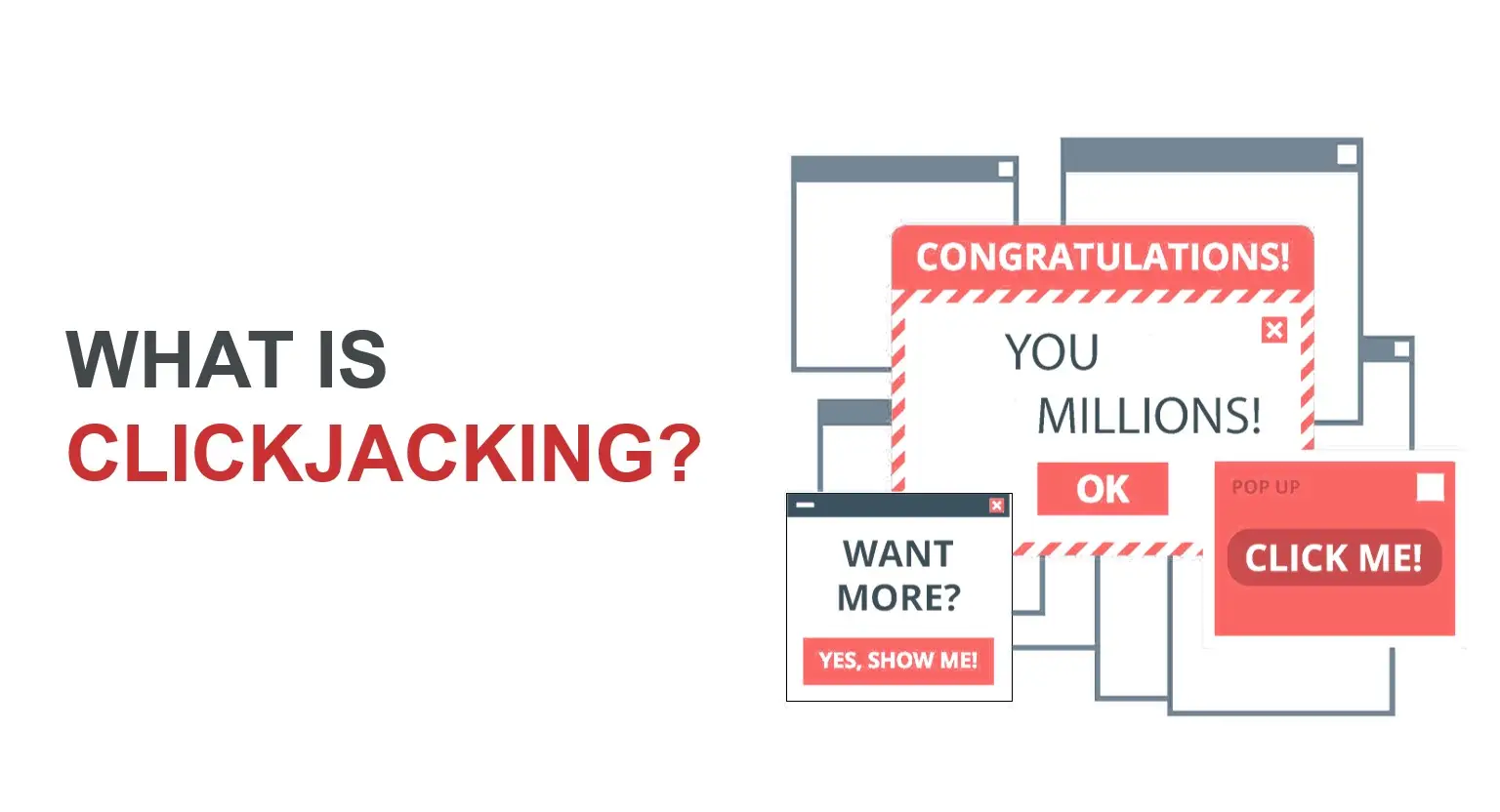What Is Clickjacking?

1 Minutes 48 Seconds | 1622views
Listen This Article Now!
Introduction
Clickjacking, also known as "UI redress attack" or "user interface redress attack," is a type of cyber-attack that tricks a user into clicking on a button or link on a website that they did not intend to click. This is done by overlaying a transparent or opaque layer on top of the original website, which hides the real button or link and replaces it with a fake one. When the user clicks on the fake button or link, they are unknowingly performing an action that they did not intend to do.
Examples of Clickjacking
One common example of clickjacking is when a user is tricked into clicking on a "like" or "share" button on a social media site. The user may think they are simply clicking on a button to view a video or read an article, but in reality, they are unknowingly sharing the content with their entire network of friends or followers. This can be used to spread spam, malware, or other malicious content.
Another example is a phishing attack where a user is tricked into clicking on a link that appears to be from a legitimate source, such as their bank or other financial institution. The link may lead to a fake website that looks identical to the real one, and the user may unknowingly enter their personal information or login credentials, which can be used by the attacker to gain access to their account.
Dangers of Clickjacking
Clickjacking is dangerous because it is a very subtle attack, and it is difficult for users to detect. The attacker can use a variety of methods to make the fake button or link look like the real thing, making it hard for users to tell the difference.
Prevention of Clickjacking
To prevent clickjacking attacks, it is important to be aware of the risks and to be cautious when clicking on links or buttons on unfamiliar websites. It is also recommended to use a web browser that has built-in protection against clickjacking, such as Google Chrome or Mozilla Firefox. Additionally, website owners can use a technique called "frame-busting" which makes it difficult for attackers to overlay their own content on top of the website.
Conclusion
In conclusion, clickjacking is a serious threat to internet users, and it is important to be aware of the risks and take steps to protect yourself. By being cautious, using a secure web browser, and staying informed about the latest threats, you can help protect yourself from this dangerous attack.
Table Of Content
- Introduction
- Examples of Clickjacking
- Danger of Clickjacking
- Prevention of Clickjacking
- Conclusion
Introduction
Clickjacking, also known as "UI redress attack" or "user interface redress attack," is a type of cyber-attack that tricks a user into clicking on a button or link on a website that they did not intend to click. This is done by overlaying a transparent or opaque layer on top of the original website, which hides the real button or link and replaces it with a fake one. When the user clicks on the fake button or link, they are unknowingly performing an action that they did not intend to do.
Examples of Clickjacking
One common example of clickjacking is when a user is tricked into clicking on a "like" or "share" button on a social media site. The user may think they are simply clicking on a button to view a video or read an article, but in reality, they are unknowingly sharing the content with their entire network of friends or followers. This can be used to spread spam, malware, or other malicious content.
Another example is a phishing attack where a user is tricked into clicking on a link that appears to be from a legitimate source, such as their bank or other financial institution. The link may lead to a fake website that looks identical to the real one, and the user may unknowingly enter their personal information or login credentials, which can be used by the attacker to gain access to their account.
Dangers of Clickjacking
Clickjacking is dangerous because it is a very subtle attack, and it is difficult for users to detect. The attacker can use a variety of methods to make the fake button or link look like the real thing, making it hard for users to tell the difference.
Prevention of Clickjacking
To prevent clickjacking attacks, it is important to be aware of the risks and to be cautious when clicking on links or buttons on unfamiliar websites. It is also recommended to use a web browser that has built-in protection against clickjacking, such as Google Chrome or Mozilla Firefox. Additionally, website owners can use a technique called "frame-busting" which makes it difficult for attackers to overlay their own content on top of the website.
Conclusion
In conclusion, clickjacking is a serious threat to internet users, and it is important to be aware of the risks and take steps to protect yourself. By being cautious, using a secure web browser, and staying informed about the latest threats, you can help protect yourself from this dangerous attack.
Share this on: